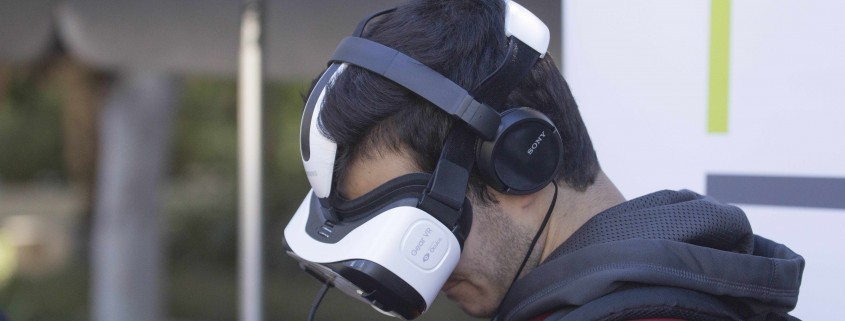VRSC set to host virtual reality festival
USC’s only virtual reality club will be hosting its first-ever annual student Virtual Reality Festival and Demo Day on April 15. Taking place at the USC School of Cinematic Arts, the event is meant to promote and educate students on the ever-expanding medium of virtual reality.
In early 2015, mechanical engineering student Jake Green realized that there was no organization for students interested in virtual reality at USC. By the end of January of that year, VRSC was founded and is now comprised of a group of fourteen students across the University interested in promoting and creating new stories through VR.
For the month of March, VRSC accepted applications from students with their own VR projects, with the promise of up to $5,000 in cash prizes for the best stories and concepts. With applications for 360 live action video, animation, interactive games and augmented realities, the showcase is meant to mirror the School of Cinematic Arts’ long-running Demo Day meant for peers, professors and industry professionals to gain a look into the ever-expanding new medium of virtual reality.
Virtual reality is a new platform meant to engage users through the use of an immersive, 3-D landscape. Experienced through a headset that wraps around the user’s face, VR seems to be the buzzword on everyone’s lips. The New York Times sent weekly subscribers Google cardboard headsets to attach to phones last year.
Big-name companies like Facebook and Sony have also started to become involved in the Virtual Reality world. According to technology site TechCrunch, “Virtual reality is no longer creeping into the mainstream: It’s leaping.” Even film production
companies have put a foot in the pool, as Annapurna Pictures — the production company responsible for movies such as American Hustle and Zero Dark Thirty — has begun to develop and release properties for the platform. In 2015, Annapurna released its first VR story, designed by artist Chris Milk, the video Evolution of Verse premiered at last year’s Sundance Film Festival New Frontier section. The just-ended South by Southwest festival — a longtime festival pioneer of interactive media — was a host to a litany of engaging content this past March as well, with a special track of their Interactive section specifically dedicated to VR.
However, according to TechCrunch, VR’s “next major obstacle will be content.” The platform is undoubtedly revolutionary and interesting, but it’ll truly require engaging and arresting stories and content to draw viewers in. Microsoft’s Oculus Rift VR headset and controller retails for $600, which means that users will need to feel drawn to the stories being offered on the headset if Microsoft can hope to make any profit. On the other end of the spectrum, VR headsets like Google Cardboard retail for around $20, but the lower-tech quality of the device may make VR feel like a gimmick or toy rather than a tool that can be taken seriously in the cinematic world.
USC School of Cinematic Arts has long been on the cutting edge of technology. With one of the leading programs on Interactive Media in the world, it’s only a matter of time before whole classes may be dedicated to the emerging Virtual Reality universe. VRSC’s Festival and Promo day is only the beginning.

